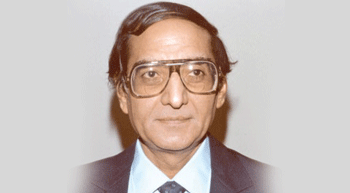
Scope for pavement rehabilitation alternatives is huge
In 2011, you had prepared specification for cold milling and hot recycling, and submitted to the Flexible Pavement Committee of IRC. What is the status now? The draft specifications on cold milling and hot recycling specifications submitted by me in 2011 were reviewed by the members of the Flexible Pavement Committee of the Indian Roads Congress (IRC). Reviews were positive. I submitted the revised drafts in 2012 incorporating all comments. Thereafter, I did not hear anything from the Committee regarding the fate of those revised drafts. This is despite the fact that the asphalt pavement recycling guide manual used in the US at the present time was authored by me and I also drafted IRC standards on dense graded asphalt mixes and stone matrix asphalt, which have been adopted. I do not have any indication as to when those specifications will be considered or adopted.
What are the major hurdles in adopting these specs?
Things move very slowly in the Indian Roads Congress. Indian highway engineers at large are not eager either in adopting new technologies.
Are our engineers/plant operators trained enough to handle these technologies effectively?
The training programme for highway engineers in India is almost zero. This is despite the fact that we are spending over Rs 70,000 crore every year on highway construction. There cannot be quality without training (knowledge).
What are the major parameters to opt for a specific technology?
There are numerous technical and economical parameters which determine whether hot or cold recycling is appropriate for a specific project. These guidelines are given in the paper authored by me and published in a highly prestigious international journal. That paper can be downloaded free at the following link:
http://www.scribd.com/doc/34629021/Recycling-of-Asphalt-Pavements-An-Overview
How do you assess the availability/quality of equipment and machinery?
Equipment for all types of recycling (hot, cold and milling) is already available in India. In most cases, recycling is highly economical. So the deterrent is not the cost but the lack of knowledge and the lack of determination to use new technologies. This is despite the fact that many manufacturers are trying their best to promote the recycling technology.
What sort of updates need to be carried in the hot/cold mix plants for using RAP?
Details of upgradation are given in the US Guidelines manual mentioned earlier. Briefly, a batch plant needs to be updated with a RAP bin on the ground; a conveyor to take the RAP to a bin on the tower from where it is introduced into the weigh hopper. Approximate one-time cost is about Rs 20-25 lakh. NHAI do not normally allow any drum mix plant but they have allowed use of imported double-barrel drum plants for recycling. Cold recycling (both plant and in-place) is done with equipment already available in India.
What determines the selection of type of mixing?
Both batch and drum can be used; the main difference being the amount of RAP which can be used. More RAP can be used in drum plants.
There is general perception from the road builders that the RAP available is not of good quality. What is your take on this?
This is a wrong perception. Such perceptions can be cleared only through training which is almost non-existent in India. Numerous studies in the US have shown the quality of hot recycled asphalt mix is equal to or better than 100 per cent virgin mix.
The US Guide on Pavement Recycling can be downloaded free at the following link: http://www.scribd.com/doc/47299513/Pavement-Recycling-Guidelines-for-State-and-Local-Governments-Federal-Highway-Administration-Publication-No-FHWA-SA-98-042-December-1997


 +91-22-24193000
+91-22-24193000 Subscriber@ASAPPinfoGlobal.com
Subscriber@ASAPPinfoGlobal.com